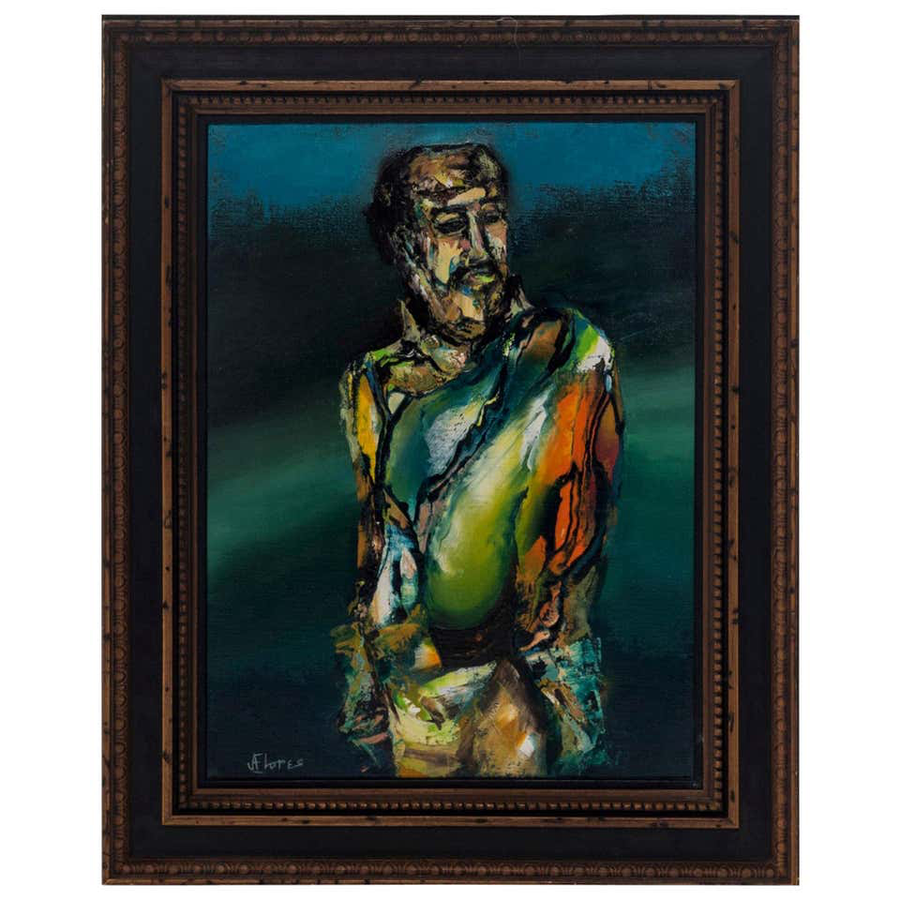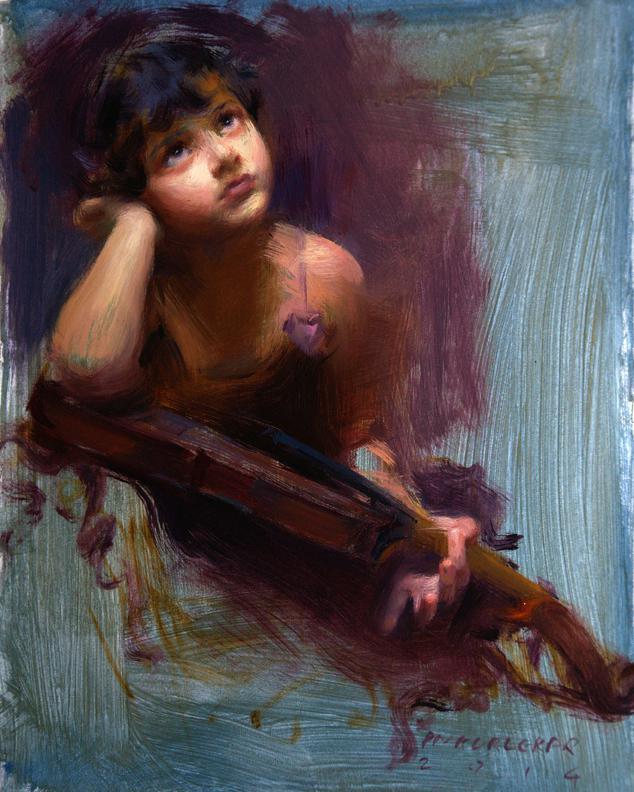Exploring the Depths of Feeling with Figurative Oil Painting Strategies
Exploring the Depths of Feeling with Figurative Oil Painting Strategies
Blog Article
The Evolution of Metaphorical Oil Painting: Recognizing Its Historic Value and Modern Interpretations
The evolution of metaphorical oil painting serves as a compelling lens through which to analyze the interplay between imaginative expression and historic context. Contemporary musicians, drawing from this rich heritage, are now reinterpreting the human figure in methods that test traditional narratives.
Beginnings of Figurative Oil Paint
The origins of figurative oil painting can be mapped back to the early Renaissance in Europe, especially in the 15th century. This duration marked a substantial separation from the stiff kinds and flat depictions characteristic of medieval art. Musicians began to check out naturalism, highlighting the human number and its psychological expression. The advancement of oil paint enabled for better deepness of color and detail, enhancing the realistic look and vibrancy of their work.

In this transformative era, figures were typically portrayed within contextually rich atmospheres, showcasing not just their physical characteristics yet additionally their mental states. Pioneers such as Jan van Eyck and Titian harnessed the tool's versatility, employing layering strategies to attain luminosity and appearance. This development assisted in the portrayal of complex textiles and the subtleties of skin tones, adding to the development of portraiture and narrative scenes.
Moreover, the Renaissance focus on humanism fostered a gratitude for individualism, which subsequently influenced artists to develop more vibrant and relatable figures - figurative oil painting. Consequently, metaphorical oil painting arised as a powerful lorry for narration and psychological involvement, laying the foundation for future artistic movements and designs
Trick Historic Motions
Substantial historic motions have actually shaped the development of figurative oil paint, each contributing one-of-a-kind philosophies and methods that broadened the medium's opportunities. The Renaissance marked a zero hour, highlighting realism and the human form, with artists like Leonardo da Vinci and Michelangelo pushing the limits of physiological precision and perspective. Following this, the Baroque period brought dramatic contrasts of light and darkness, exhibited by Caravaggio, that infused religious themes with extreme emotionality.
The 19th century presented Romanticism and Realism, where artists such as Delacroix and Courbet challenged classical suitables, concentrating on private expression and everyday life. The advent of Impressionism additionally transformed the medium by emphasizing the effects of light and color, bring about a separation from standard depiction.
In the very early 20th century, movements like Expressionism and Cubism redefined metaphorical painting with abstraction and the exploration of psychological depth. Each of these activities not only mirrored the societal changes of their times yet also laid the foundation for contemporary analyses. The interaction between these historical motions has actually developed an abundant tapestry of viewpoints and styles, influencing contemporary artists in their pursuit of capturing the human experience on canvas.
Techniques and Materials Evolution

Throughout the Baroque period, methods such as chiaroscuro and sfumato emerged, boosting the psychological resonance of metaphorical structures. Musicians began to experiment with lusters and impasto, manipulating structure and luminosity. By the 19th century, technologies like the use of pre-mixed paints in tubes changed access, enabling musicians to paint en plein air and record the fleeting impacts of light.
The 20th century witnessed the introduction of artificial pigments and mediums, which broadened the scheme and changed the uniformity of oil paints. Furthermore, visit our website the expedition of new application methods, such as palette knives and brushes of differing rigidity, further diversified imaginative expression. Jointly, these developments show the advancing relationship between materials, strategies, and the artistic vision intrinsic in metaphorical oil painting.

Contemporary Analyses
Contemporary analyses of metaphorical oil paint show a vibrant discussion between practice and technology, where artists test developed standards and discover varied motifs. This development materializes in various ways, as contemporary musicians mix classic methods with contemporary ideas, typically attending to social, political, and personal narratives.
Many practitioners attract ideas from historic works, yet they infuse their items with contemporary perspectives, using the human type as a car for commentary on identity, society, and sex. Artists increasingly trying out abstraction, distortion, and combined media, which enables a broader analysis of the figure and its context.
Moreover, making use of vibrant color combinations and unusual compositions commonly offers to interrupt traditional checking out experiences, prompting important interaction from audiences. This change in focus prolongs beyond visual appeals; it reflects an expanding awareness of the complexities of human experience in an interconnected globe.
As figurative oil paint remains to advance, it stays a vital tool for exploring the subtleties of modern life, symbolizing both a regard for heritage and a commitment to modern idea. The result is an abundant tapestry of expression that reverberates with the complexities of the modern human condition.
Influence on Modern Art
The impact of figurative oil paint on modern-day art is profound, as it has continuously motivated a myriad of imaginative movements and methods throughout the 20th and 21st centuries. From Expressionism to Surrealism and past, the expedition of the human figure has stayed a central style, permitting musicians to share complex emotions and narratives. This emphasis on figurative representation has resulted in a re-examination of standard methods, causing cutting-edge strategies that mix realistic look with abstraction.
Moreover, contemporary artists have embraced figurative oil paint as a method to address social and political issues, making use of the tool to challenge understandings of culture, gender, and identification. The rebirth of passion in metaphorical operate in recent years reflects a longing for link in a significantly electronic world, where human experience and emotion are paramount.
In addition, the discussion between figurative oil painting and modern-day art appears in the jobs of musicians such as Kehinde Wiley and Jenny Saville, who make use of historic recommendations while infusing their items with modern relevance. Ultimately, metaphorical oil painting remains to form and redefine article source contemporary artistic expression, emphasizing its long-lasting importance in the art globe.
Verdict
The development of metaphorical oil painting highlights its historic relevance and adaptability across numerous artistic motions. Inevitably, metaphorical oil painting stays an essential medium for checking out the human experience, reverberating greatly in today's digital landscape.
The development of metaphorical oil paint offers as a compelling lens with which to check out the interaction between artistic expression and historical context.Substantial historic activities have shaped the development of metaphorical oil paint, each adding one-of-a-kind i thought about this philosophies and techniques that expanded the medium's opportunities.As historic activities shaped the trajectory of metaphorical oil paint, the strategies and materials employed by artists have also gone through significant makeovers. figurative oil painting.The influence of metaphorical oil paint on modern-day art is extensive, as it has actually consistently motivated a myriad of imaginative activities and techniques throughout the 21st and 20th centuries.The advancement of figurative oil paint underscores its historic value and adaptability across numerous creative movements
Report this page